The Braveheart kilt, a timeless garment rooted in Scottish heritage, stands as a symbol of rebellion and tradition. Beyond its striking appearance, this iconic piece of attire carries a rich history that intertwines with tales of courage, defiance, and cultural identity. In this exploration, we delve into the origins, evolution, and enduring significance of the Braveheart kilt, understanding how it has become more than just a piece of clothing, but a statement of resilience and pride.
Origins and Historical Significance:
The roots of the Braveheart kilt can be traced back to the early Scottish clans, where tartans were not just fabric patterns but badges of honor. These tartans represented familial ties and allegiances, serving as a form of identification on the battlefield. The rebellious spirit of the Scottish people during times of political upheaval found expression in their attire, with the kilt emerging as a symbol of defiance against external forces.
The legendary story of William Wallace, the Scottish knight who led a rebellion against English rule in the late 13th century, further solidified the association between the kilt and rebellion. While historical accuracy might blur the specifics, the enduring image of Wallace, portrayed by Mel Gibson in the movie “Braveheart,” has etched the Braveheart kilt into popular culture as a symbol of resistance against oppression.
Craftsmanship and Symbolic Elements:
Crafting a Braveheart kilt involves meticulous attention to detail. The choice of tartan pattern is not arbitrary; it often reflects familial lineage and heritage. Each fold and pleat holds significance, with the kilt becoming a canvas for personal and cultural expression. The use of quality materials, such as wool, ensures durability while maintaining a connection to the traditional Scottish way of life.
Beyond the aesthetics, the kilt embodies a sense of freedom. Its design allows for ease of movement, making it practical for both everyday wear and ceremonial occasions. This balance between functionality and symbolism is what sets the Braveheart kilt apart, transforming it into a cultural artifact that transcends time.
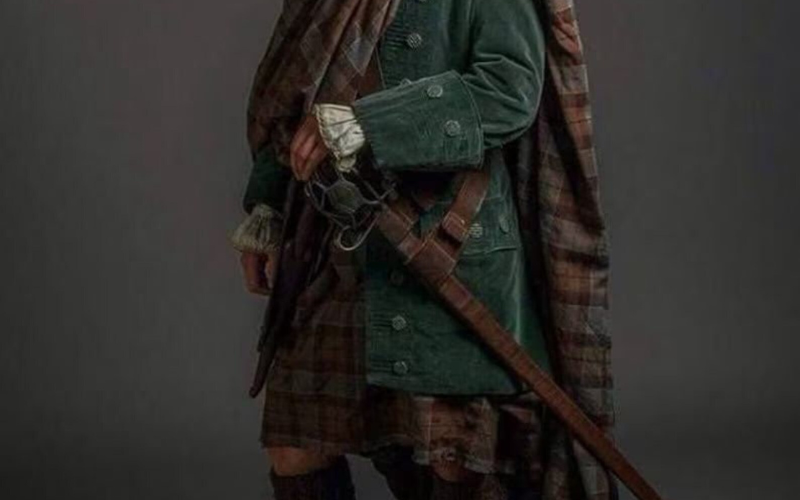
Modern Resurgence and Fashion Evolution:
In recent decades, the Braveheart kilt has experienced a remarkable resurgence in popularity, transcending its traditional roots and finding a prominent place in modern fashion. This evolution is characterized by a dynamic interplay between heritage and contemporary trends, making the kilt not just a symbol of Scottish tradition but a versatile and stylish garment embraced by individuals worldwide.
1. Breaking Traditional Barriers:
Traditionally associated with Scottish heritage and formal occasions, the Braveheart kilt has broken free from its historical constraints. Fashion designers and enthusiasts have reimagined the kilt, incorporating it into a diverse range of styles and settings. No longer confined to ceremonial events, the kilt has found its way into everyday fashion, challenging preconceived notions and redefining its role in the modern wardrobe.
2. Runway and Red Carpet Presence:
The Braveheart kilt has made a significant impact on the fashion industry, gracing runways and red carpets around the world. Renowned designers have embraced the kilt as a canvas for creativity, experimenting with various fabrics, patterns, and silhouettes. Its presence in high-end fashion shows has elevated the kilt to a symbol of sartorial innovation, proving its compatibility with the ever-changing landscape of the fashion world.
3. Celebrity Endorsement:
Celebrities and influencers have played a crucial role in popularizing the Braveheart kilt on a global scale. A-listers from different industries have been spotted donning kilts at public events, premieres, and award ceremonies. Their ability to seamlessly integrate the kilt into their wardrobes has contributed to its mainstream acceptance and positioned it as a fashion statement that transcends cultural boundaries.
4. Versatility in Contemporary Styles:
One of the key aspects of the Braveheart kilt’s modern resurgence is its adaptability to contemporary styles. From streetwear to formal attire, the kilt has proven its versatility. Fashion-forward individuals experiment with various accessories, footwear, and complementary garments to create unique looks that fuse tradition with modern aesthetics. This adaptability has played a crucial role in attracting a diverse audience to embrace the Braveheart kilt.
5. Cultural Fusion and Global Appeal:
As cultural exchange becomes increasingly celebrated, the Braveheart kilt has become a symbol of cultural fusion. It is no longer limited to Scottish communities but has gained widespread acceptance globally. The kilt’s ability to transcend borders and resonate with people from different backgrounds speaks to its universal appeal. International festivals and events now feature individuals proudly wearing the Braveheart kilt, symbolizing a shared appreciation for tradition and individual expression.
6. Boutique and Custom Designs:
The resurgence of the Braveheart kilt has also led to the emergence of boutique and custom designs. Artisans and designers offer a plethora of options, allowing individuals to choose kilts that reflect their style. From traditional tartans to modern, eclectic designs, the availability of diverse options has further fueled the kilt’s popularity and made it accessible to a broader audience.
In conclusion, the modern resurgence and fashion evolution of the Braveheart kilt is characterized by a dynamic blend of tradition and innovation. From runways to everyday wardrobes, the kilt has proven its adaptability, becoming a symbol not only of Scottish heritage but also of individualism, creativity, and global fashion consciousness. This evolution ensures that the Braveheart kilt continues to captivate new generations and remains a timeless and iconic garment on the world stage.
Wearing the Braveheart Kilt: A Modern Art Form:
Wearing the Braveheart kilt is more than donning a piece of traditional Scottish attire; it’s an art form that involves a careful balance between honoring its historical roots and expressing individual style. In this exploration, we delve into the nuances of wearing the Braveheart kilt, from styling tips to the symbolic elements that transform this garment into a modern statement of identity and pride.
1. Traditional Elements and Accessories:
When wearing the Braveheart kilt, attention to traditional elements is key. Accessories play a significant role, with items like the sporran, a pouch worn around the waist, adding both functionality and aesthetic appeal. The kilt pin, often adorned with clan symbols or emblems, serves as a decorative element while securing the layers of the kilt. Completing the look with a sgian-dubh, a small ornamental knife tucked into the sock, adds an authentic touch to the ensemble.
2. Choosing the Right Tartan:
Selecting the appropriate tartan is a critical aspect of wearing the Braveheart kilt. While some individuals may have a specific clan tartan based on their family heritage, others may opt for universal or modern designs that resonate with personal preferences. The colors and patterns of the tartan not only contribute to the aesthetic appeal but also carry symbolic significance, connecting the wearer to their roots or chosen identity.
3. Styling for Various Occasions:
One of the remarkable features of the Braveheart kilt is its versatility. It can be styled for a wide range of occasions, from formal events to casual outings. Pairing the kilt with a well-fitted jacket and tie transforms it into formalwear suitable for weddings or ceremonies. On the other hand, a casual look can be achieved by pairing it with a simple shirt or even a t-shirt, allowing the wearer to showcase their style while maintaining the kilt’s timeless charm.
4. Embracing Individualism:
Wearing the Braveheart kilt is a celebration of individualism. Beyond adhering to traditional norms, individuals have the creative freedom to express their personality through their choice of accessories, footwear, and overall styling. The kilt becomes a canvas for self-expression, allowing wearers to showcase their unique identity while paying homage to the rich cultural heritage it represents.
5. Pride in Cultural Identity:
For many, wearing the Braveheart kilt is an expression of pride in their cultural identity. Whether of Scottish descent or not, individuals embrace the kilt as a symbol of connection to tradition and history. The act of wearing the kilt becomes a way to honor ancestors, celebrate heritage, and participate in a global community that appreciates the rich tapestry of Scottish culture.
6. Modern Trends and Innovations:
As the Braveheart kilt experiences a modern resurgence, contemporary trends and innovations play a significant role in its reinterpretation. Fashion-forward individuals experiment with new materials, colors, and patterns, pushing the boundaries of traditional design. This fusion of modern and traditional elements ensures that the Braveheart kilt remains a relevant and evolving art form, capturing the attention of diverse audiences.
In conclusion, wearing the Braveheart kilt is an art form that goes beyond fashion; it is a manifestation of heritage, individualism, and cultural pride. From selecting the right tartan to embracing modern trends, individuals who don the Braveheart kilt engage in a form of self-expression that transcends time and borders. The kilt becomes a symbol of identity, uniting wearers in a shared appreciation for tradition, innovation, and the artistry of personal style.
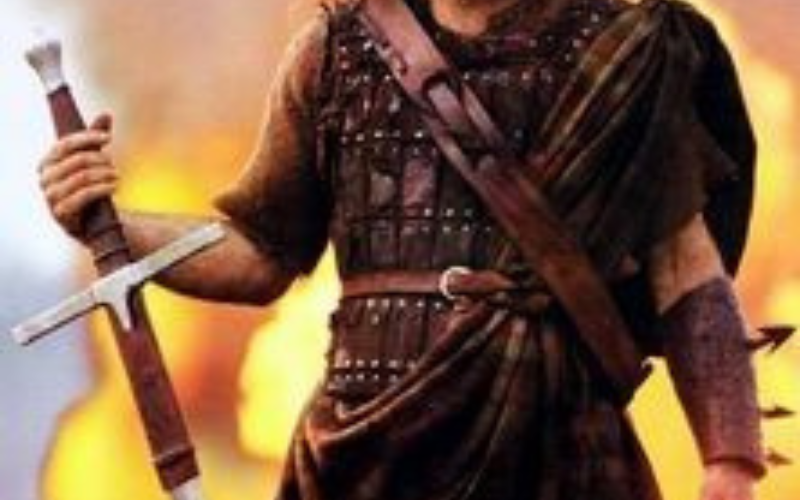
Cultural Impact and Global Appeal:
The Braveheart kilt’s cultural impact extends far beyond the Scottish borders. It has become a global symbol of individualism, courage, and authenticity. In an era where cultural exchange is celebrated, the kilt serves as a bridge between tradition and modernity, fostering a sense of connection among people of diverse backgrounds.
Scottish festivals, where kilts are proudly worn, have become global events, attracting attendees from around the world. The Braveheart kilt, once confined to the hills of Scotland, now graces runways, festivals, and everyday street fashion, embodying the spirit of rebellion against conformity and a celebration of cultural identity.
Conclusion:
The Braveheart kilt, with its roots deeply embedded in Scottish history, has evolved into a global symbol of rebellion and tradition. From its origins in the clans of Scotland to its modern-day resurgence in fashion, the kilt continues to captivate hearts and minds, transcending borders and cultural boundaries. Wearing the Braveheart kilt is not merely a fashion statement; it is a declaration of individualism, courage, and pride—a timeless expression of the human spirit. As we celebrate the rich tapestry of Scottish heritage, the Braveheart kilt stands as a reminder that traditions can evolve, adapt, and endure, leaving an indelible mark on the world stage.
FAQs
1. What is the significance of the Braveheart kilt?
The Braveheart kilt holds historical and cultural significance as a symbol of Scottish heritage and rebellion. Originating from the clans of Scotland, it became associated with tales of courage, defiance, and resilience, particularly during periods of political unrest. Today, the kilt represents a timeless connection to tradition, embodying both a sense of pride and a symbol of individualism.
2. How do I choose the right tartan for my Braveheart kilt?
Choosing the right tartan for your Braveheart kilt involves considering your familial lineage, heritage, or personal preferences. Many clans have specific tartans associated with them, but there are also universal tartans and modern designs. Researching your family history or selecting a tartan based on colors and patterns that resonate with you can help you make a meaningful choice.
3. Can I wear the Braveheart kilt for formal occasions?
Yes, the Braveheart kilt is versatile and suitable for formal occasions. With the right accessories, such as a sporran, kilt pin, and appropriate jacket, you can elevate the kilt to formalwear. Many people choose to wear the Braveheart kilt to weddings, ceremonies, and other special events, showcasing its adaptability beyond its traditional roots.
4. How do I care for my Braveheart kilt?
Caring for your Braveheart kilt involves proper cleaning and storage. Most kilts are made from durable materials like wool, but it’s essential to follow the care instructions provided by the manufacturer. Typically, kilts should be dry-cleaned or hand-washed in cold water. Avoid machine washing, and always air dry to prevent damage. Store your kilt flat or hanging to maintain its shape, and periodically inspect for any needed repairs.
5. Is it appropriate to wear the Braveheart kilt if I'm not of Scottish descent?
Absolutely! The Braveheart kilt has transcended its cultural origins and is embraced worldwide. It has become a symbol of individualism, fashion, and cultural appreciation. Whether you have Scottish roots or simply appreciate the rich history and aesthetics of the kilt, wearing it is a personal choice that reflects your style and connection to tradition. Many people, regardless of their heritage, proudly wear the Braveheart kilt at various events and celebrations.

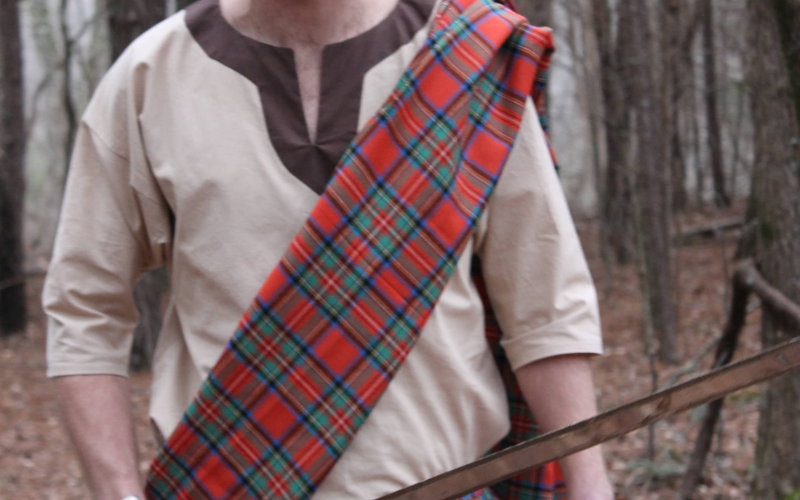
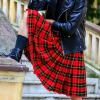
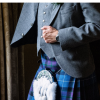
Leave a reply